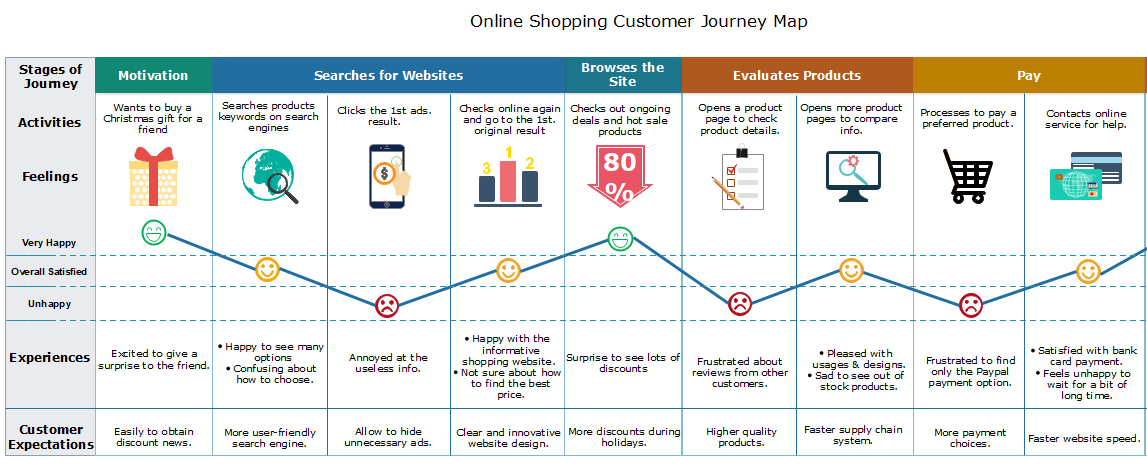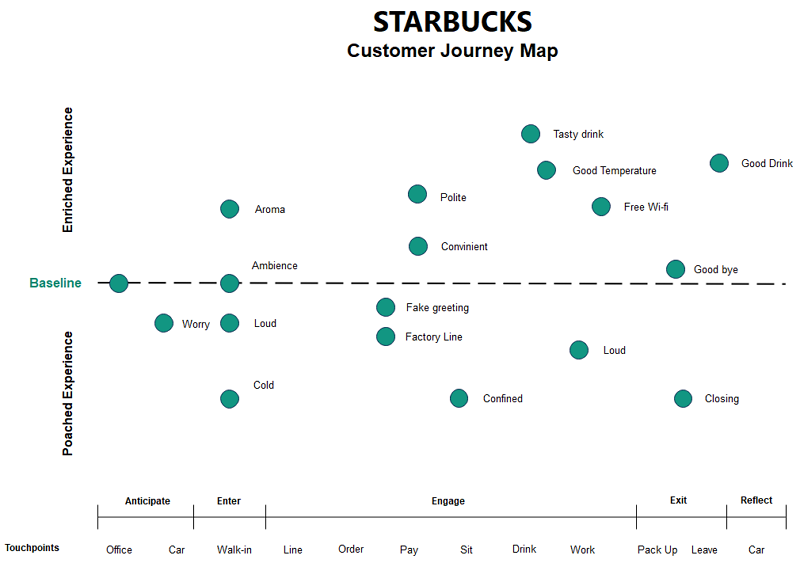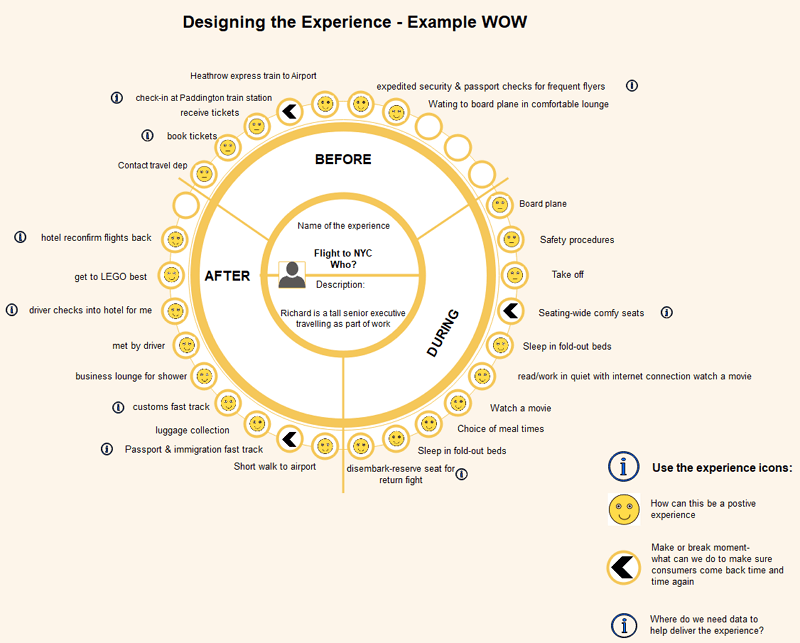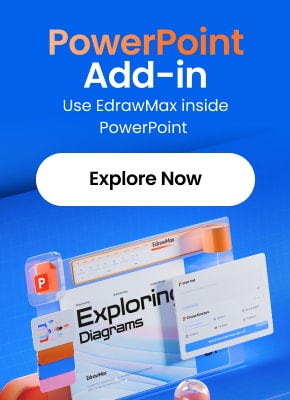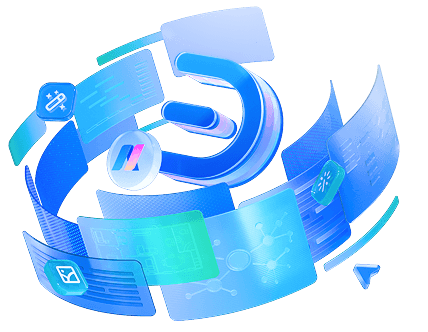Customer Journey Map Examples To Inspire You
Create and Analyze Your Customer Journey Maps
EdrawMax specializes in powerful diagramming and visualization. This article explains what a customer journey map is, provides inspiring examples, and shows you how to create one using EdrawMax. Start your free trial today!
1. What is a Customer Journey Map and What is it Used for?
A customer journey map (CJM) is an illustrative diagram that depicts a customer's entire experience with your brand. The customer-brand relationship is becoming increasingly complex. Visually mapping how customers interact with your brand—whether through social media, reviews, email, or any other channel—ensures no touchpoints are overlooked.
A customer journey map is an insightful way for businesses to step into their customers' shoes and view brand performance from their perspective. By understanding customer pain points and moments of joy, a business can leverage its strengths while actively improving areas that are not working well.
All customer touchpoints are mapped out to create a user journey. This process should map customer behaviors, activities, goals, and any obstacles they encounter. The objective of developing a customer journey map is to gain a visual understanding of the customer's experience. The insights gained are then used to shape new initiatives and improve business processes.
2. 8 Inspiring Customer Journey Map Examples
Journey maps come in a wide variety of forms. Here are 8 examples we selected for you.
Example 1: Starbucks Customer Journey Map
This Starbucks customer journey map uses a timeline style to outline various touchpoints and a baseline that differentiates negative from positive experiences. While the map may not apply to e-commerce, it offers inspiring insight into the potential emotions a customer can feel at each stage of their journey.
Example 2: The Experience Wheel - LEGO
This experience wheel provides a simplified and engaging analysis of a customer's journey, in this case, for a flight to New York City. The central part of the wheel focuses on the persona's characteristics. The next circle contains three levels of experience in achieving the travel goal. Each step is marked with an emotion that reflects a positive, neutral, or negative experience.
This type of map is an excellent way to quickly analyze a product or service from the customer’s perspective.
Example 3: B2B Customer Journey Map
This B2B customer journey map example is structured to break down the journey stage by stage, aligning each step with specific customer goals. This outline makes it feel like you are walking a mile in the customer's shoes.
It is vital to understand how buyers engage with your business and learn what you need to improve from a customer's point of view and experience. This CJM visualizes that in a B2B environment.
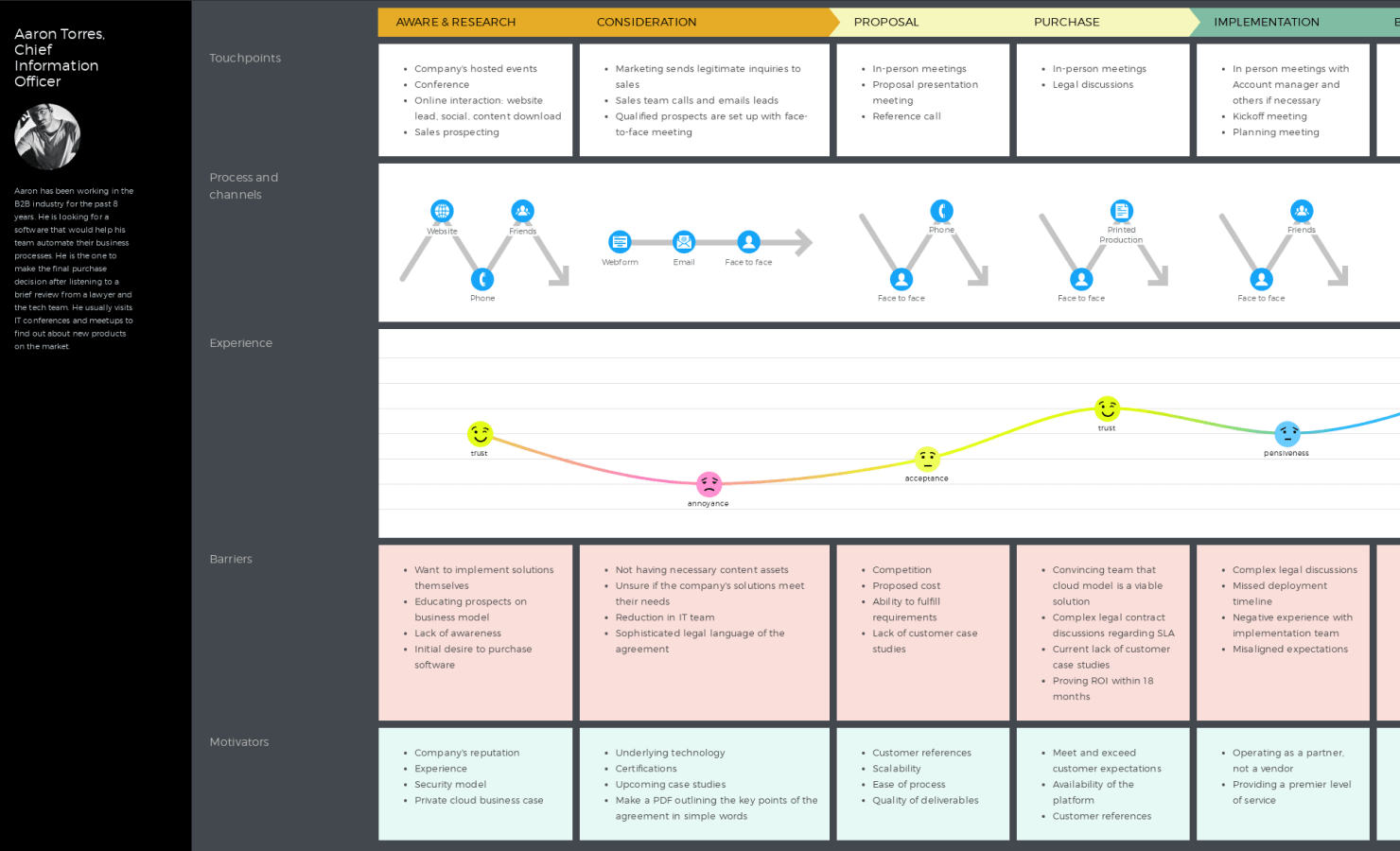
Source: uxpressia.com
Example 4: Automotive Purchase Journey
This map breaks down the methods customers use to find information about car purchases and highlights the factors they found most beneficial.
It gives enterprises great insights into the avenues buyers take to educate themselves on the solutions they offer, making it easy to discover what has the most traction with them.
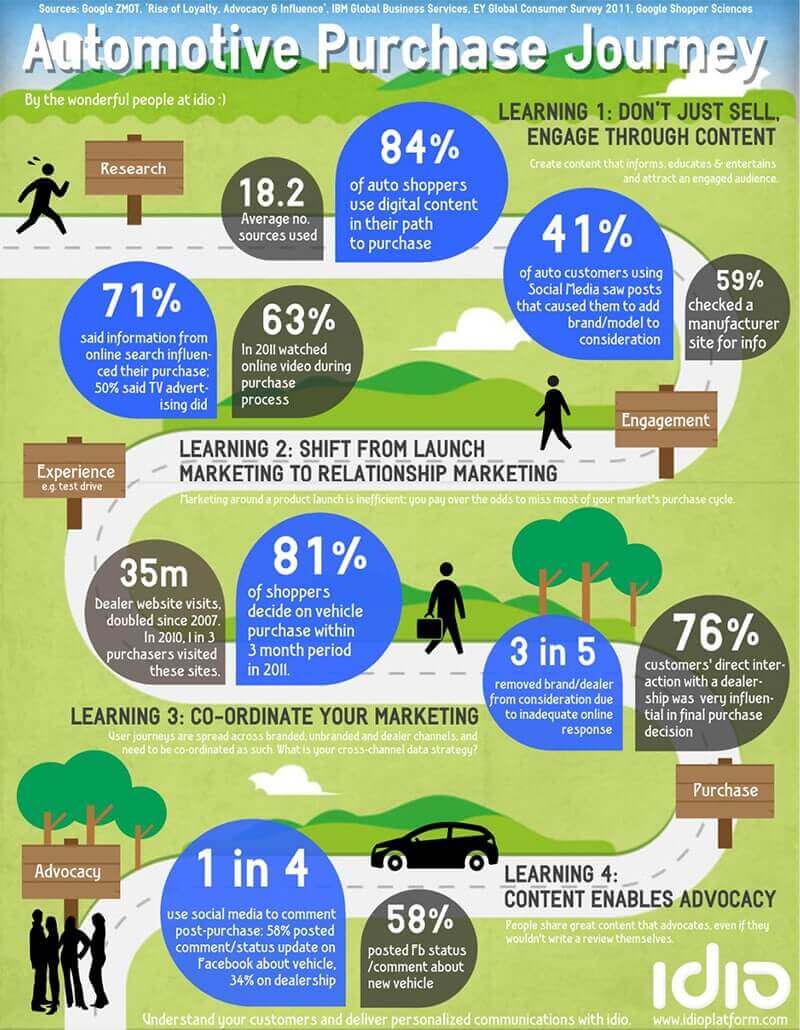
Source: idioplatform.com
Example 5: Digital Experiences Journey
This CJM example uses a simple structure that focuses on the crucial moments where marketing can exert influence. The map outlines key touchpoints for a hypothetical hot chocolate store.
The map highlights the importance of identifying opportunities and potential risks. It makes it easy to spot a customer's marketing end goal and how various marketing technologies affect buyer choices.
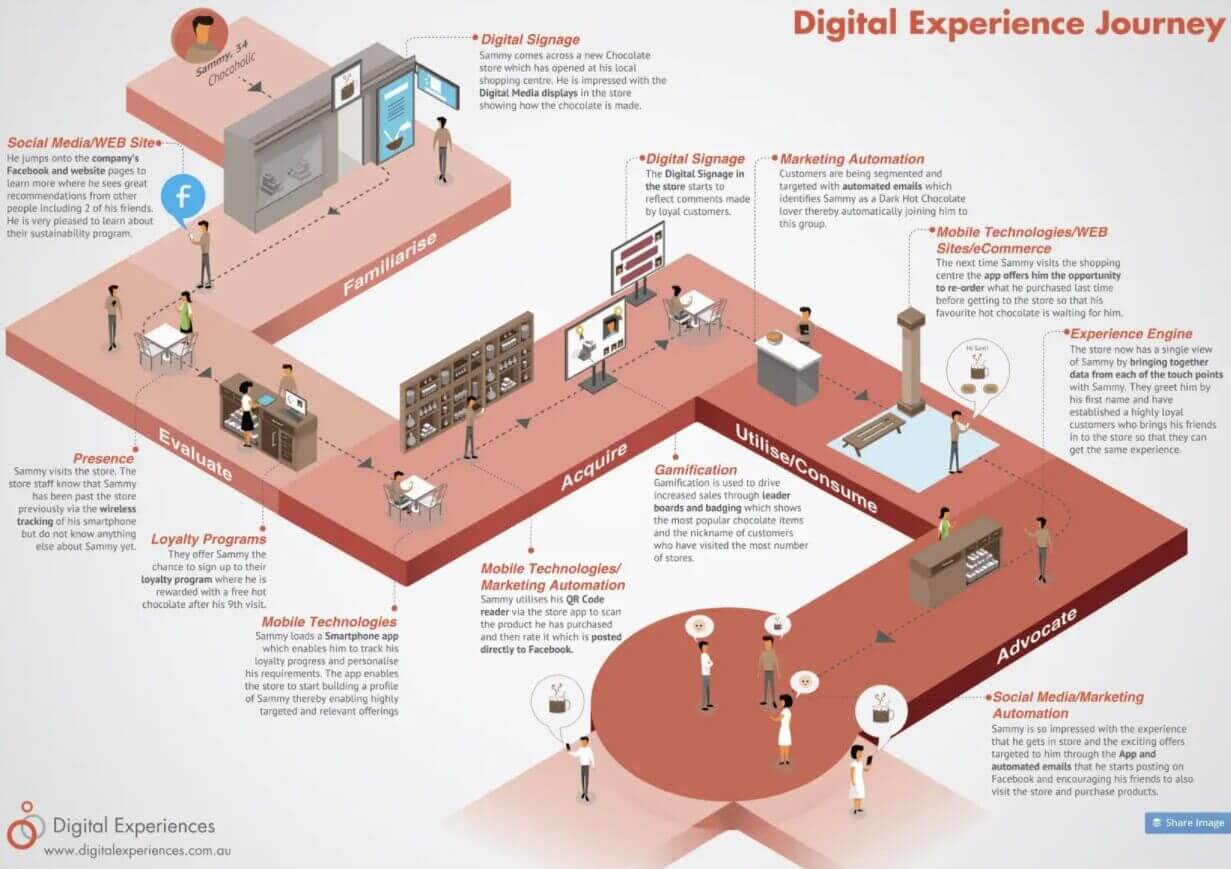
Source: boagworld-cdn.sirv.com
Example 6: Product Plan Journey Map
This map takes a visually appealing approach. The outline is designed to be widely shared within an organization, as it is both engaging to look at and easy to understand.
By making a CJM more visual, you can convey complex information with a creative twist, making the data more accessible and consumable for all teams.
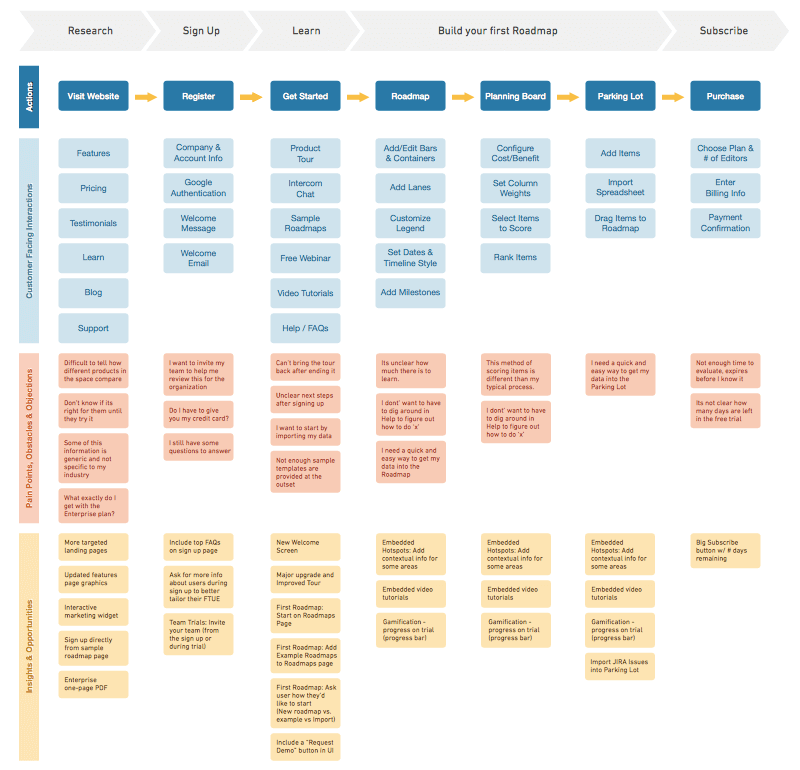
Source: productplan.com
Example 7: Disability Employment Services Customer Journey Map
This is a simplified customer journey map example that provides an overview of how job seekers choose and engage with an organization's services.
Businesses can use this outline to develop a staff guide in the form of a booklet. They can combine graphics from customer feedback and flesh out the tasks involved at each stage of the journey.
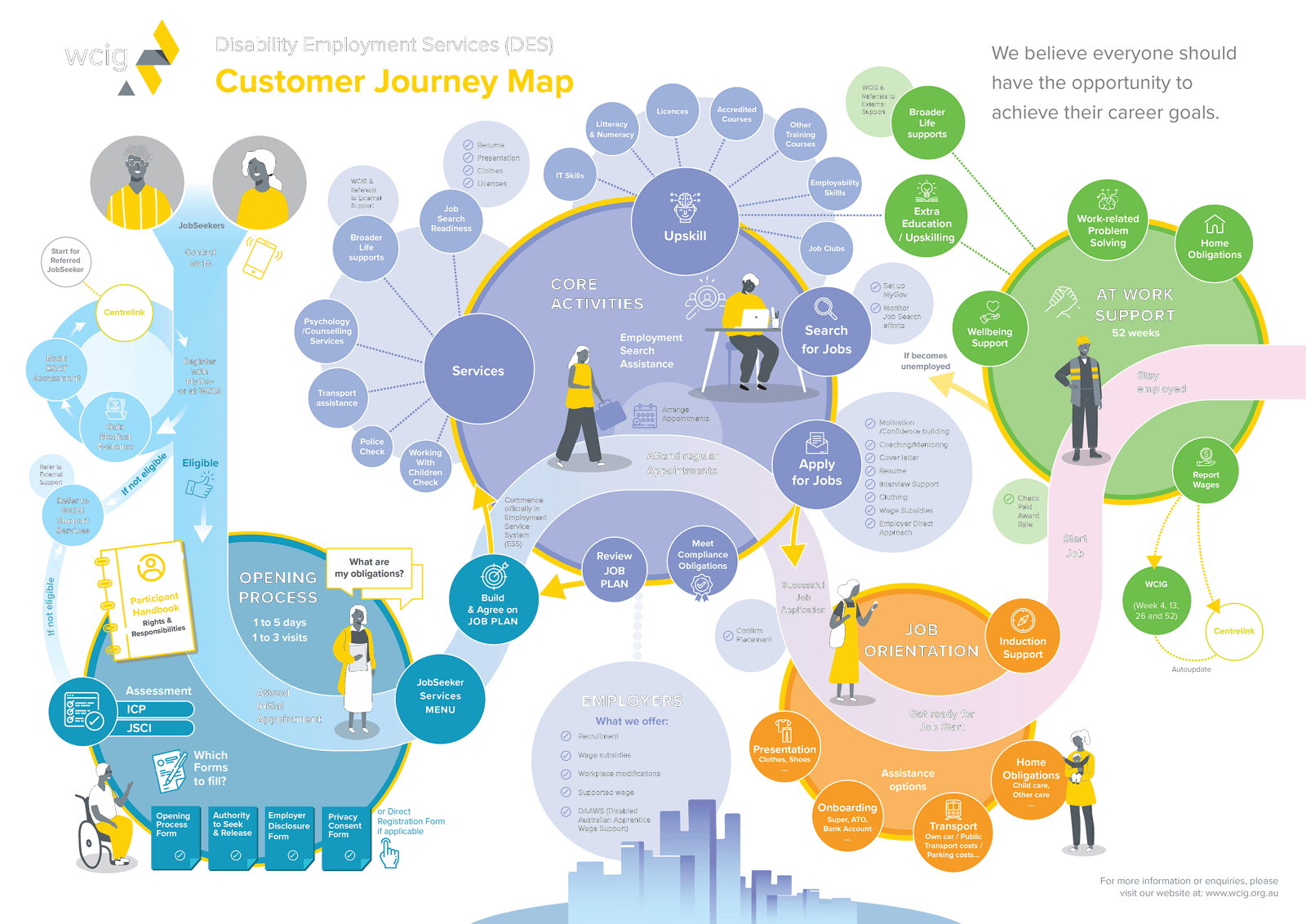
Source: crealodesign.com
Example 8: Health Insurance Customer Journey Map
This customer journey map example moves us closer to a full customer experience (CX) strategy. This outline challenges even the biggest banks in the world to become truly customer-centric.
The finance, insurance, and banking sectors are crowded with competition. Gaining insights from customer experience can help companies stand apart. Improving your CX strategy and becoming customer-centric keeps clients happy and loyal.
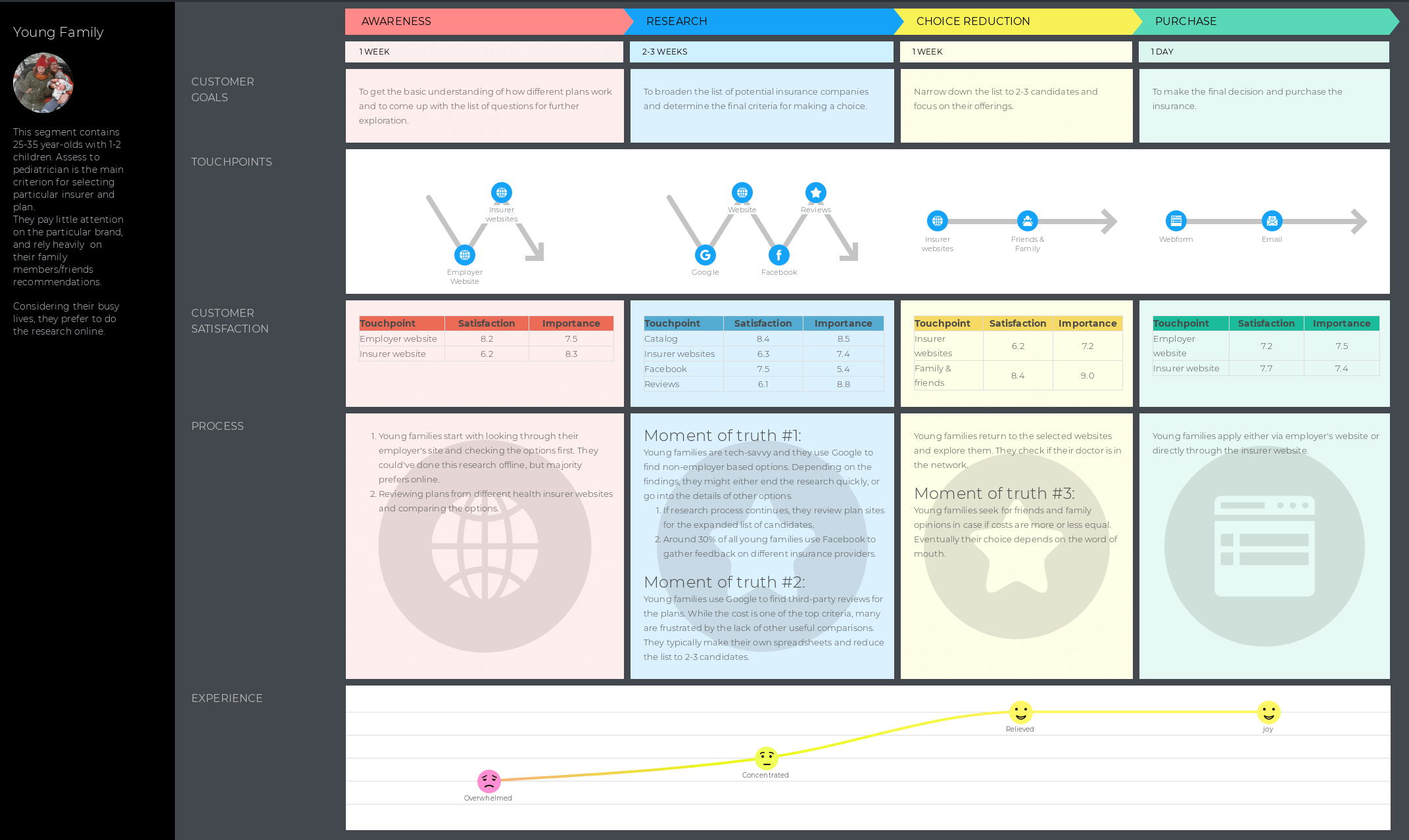
Source: uxpressia.com
3. Benefits of Customer Journey Maps
Customer journey maps bridge the gap between customers and brands. The process provides valuable insights, leading to data-driven decisions. CJMs allow businesses to experience what their customers go through, helping them ensure consistency across all channels and touchpoints.
A well-designed CJM:
- Is one of the simplest tools to use compared to related diagrams and blueprints.
- Provides a comprehensive, bird's-eye view of the entire customer journey.
- Unites different teams to resolve specific customer challenges, which can have a major impact on business growth.
- Minimizes negative customer experiences, which leads to higher customer retention and faster conversions.
- Enables enterprises to prioritize customer-focused actions and strategies.
- Highlights the gaps between various departments and provides insights on how to improve communication and workflow.
4. How to Create a Customer Journey Map
Creating an insightful customer journey map can be broken down into the following stages:
#1 Define the specific goals for your map:
What is your objective for creating a CJM? What experiences will it be based on? What is the specific focus? Answering these questions will help you define a clear persona, which is essential for accurately directing every aspect of your CJM.
#2 Profile your personas and outline their goals:
What is your objective for creating a CJM? What experiences will it be based on? What is the specific focus? Answering these questions will help you define a clear persona, which is essential for accurately directing every aspect of your CJM.
#3: Narrow your focus to a target customer persona:
A customer journey map should track the experience of one specific customer type to ensure an accurate reflection. Therefore, it is best to highlight a single customer persona.
#4: Outline all the touchpoints:
Break down the processes into more detailed subprocesses. At this stage, ensure you include any necessary data stores and flows.
#5: Decide which elements you want your customer journey map to highlight:
Depending on the map's purpose, you can choose from four common types of CJMs: current state, day in the life, future state, and service blueprint.
#6: List the resources you will need for the journey:
Identify the resources required to create the ideal customer experience, then take inventory of the resources you currently have and the ones you will need to acquire.
#7: Analyze the results and take the customer journey yourself:
This is the most critical part of the process, as it directly impacts business improvement. Based on the insights gained from the journey, ask yourself: how can we better support our customers?
#8: Implement essential changes:
Data analysis should provide a clear vision for what you want your business to become. To achieve this vision, you will need to implement the necessary changes. These changes are crucial because they directly address the pain points that customers have identified.
5. Easy-to-Use Customer Journey Map Creator
Understanding the needs and pain points of your customers is essential for setting your business apart. For many brands, breaking down the customer journey phase by phase and aligning each step with a goal can be challenging. You can use the intuitive services of CJM creators like EdrawMax to easily restructure your points.
This is a crucial step towards maximizing customer success, improving your brand, and strengthening your enterprise. Ultimately, everything about your business revolves around solving customer problems and achieving lasting breakthroughs with your unique product or service.
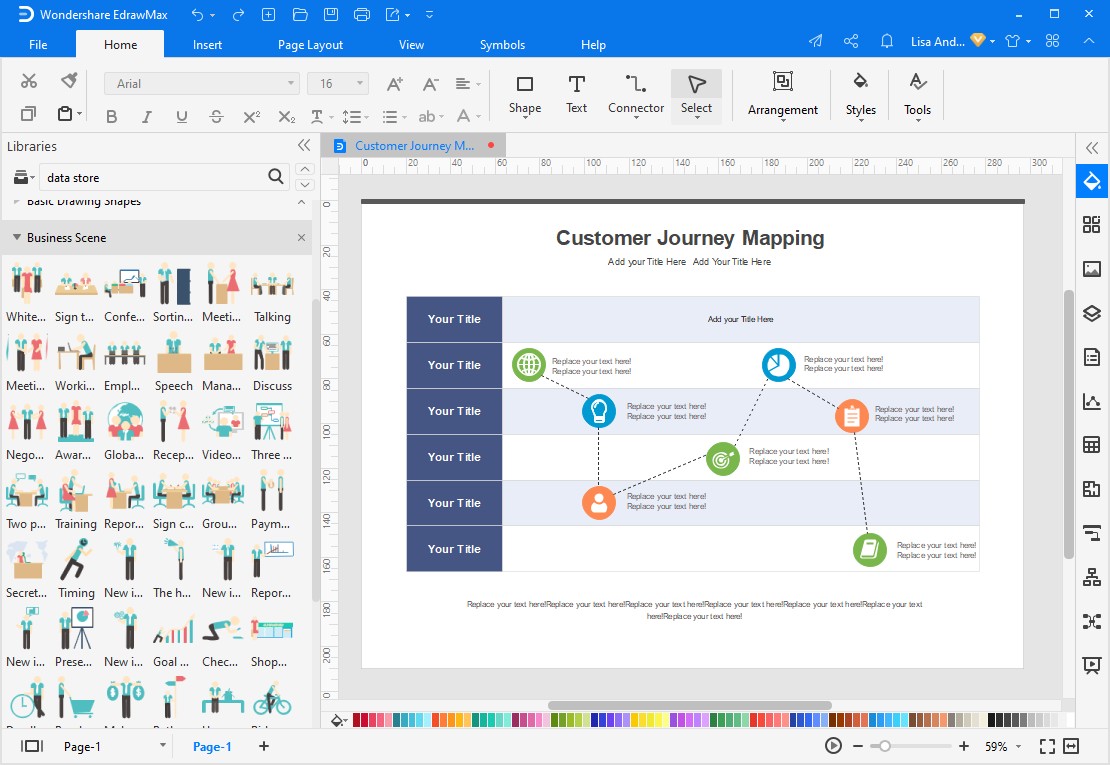
EdrawMax
All-in-One Diagram Software
- Superior file compatibility: Import and export drawings to various file formats, such as Visio
- Cross-platform supported (Windows, Mac, Linux, Web)
6. Key Takeaways
A customer journey map offers the best way to visualize how consumers interact with your business. Customer journey mapping can start on simple Excel sheets by outlining areas of friction from the user's point of view.
However, gaining a comprehensive vision that describes an average customer experience can provide the necessary insights to improve your brand. There are many CJM templates and customer journey map examples that can help you take the necessary steps with ease. Gain powerful visual stories by leveraging EdrawMax's research and infographics expertise.
You May Also Like
Life Cycle Diagram Examples
Article
